Although we do not recommend biguanides, we understand that there are special circumstances that might warrant a family to choose this option over chlorine. Still, biguanide pools are something we do not see very often but when we do, pool owners have the same question:
How do I convert my pool from Baquacil to chlorine?
If you find yourself in this same predicament, don’t fret. INYO put together a step by step solution that helps pool owners convert their pool back to chlorine.
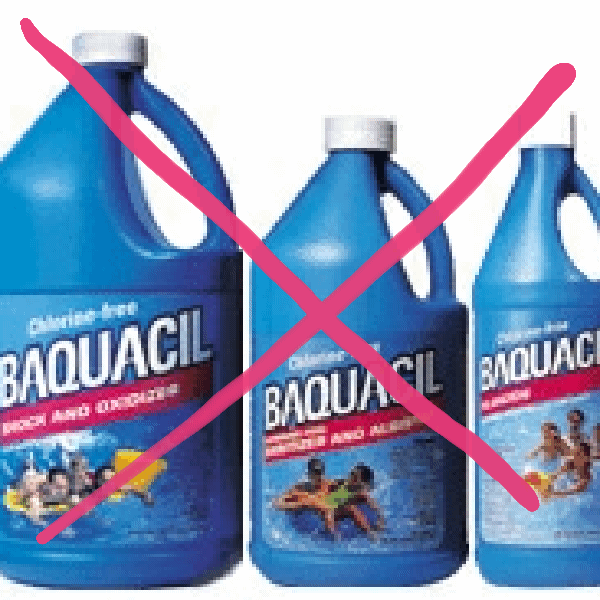 1. No More Biguanides
1. No More Biguanides
First, if you no longer want to use biguanides- stop putting it in your pool. Let the biguanide levels fall to zero. Depending on the size of your pool, this might take a few days. However, if this process takes longer than expected, we recommend treating your pool with non-biguanide algaecide. This helps prevent algal blooms from forming around your pool. Additionally, we recommend brushing your walls to help prevent algae.
In short, stop adding any biguanides to your pool.
2. Clean Your Filter
Once your biguanide levels reach zero, focus on cleaning your filter. Also, it’s normal for the color of the water to change. Even though your water tests zero 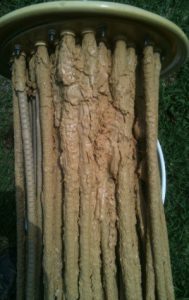 for biguanides, there may be residual biguanide in/on your liner or pool equipment. Don’t worry, though, the color change is only temporary and works itself through.
for biguanides, there may be residual biguanide in/on your liner or pool equipment. Don’t worry, though, the color change is only temporary and works itself through.
Sand Filters: Change the sand in your filter.
Cartridge Filters: Replace or chemically clean your cartridges.
D.E. Filters: Clean the inside of the tank, grids or fingers, remove and replace D.E powder,

3. Adjust the pH Levels
Next, make sure you test your chemical levels with a new test kit BEFORE adjusting your pH levels. Ideally, your pH levels should be between 7.4-7.6 ppm.
To increase your pH levels, use a pH increaser. If after testing your water your pH and alkalinity levels are low, you can add alkalinity to increase both simultaneously.
4. Shock Your Pool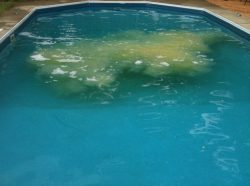
The next thing you want to do is shock your pool. Make sure you purchase non-chlorine shock. DO NOT use any other kind of shock during this step.
Add 4 pounds of non-chlorine shock per 10,000 gallons of water. (ie. If your pool is 30,000 gallons, you need 12 pounds of non-chlorine shock.) Again, don’t fret if you see your water beginning to turn clear green. That is common.
5. Re-Adjust Your pH
After a few days, check your pH levels again to make sure it is holding. Again, the ideal level for pH falls between 7.4-7.6 ppm. Also, don’t forget to keep an eye on your filter. Actively clean out your filter to avoid backup.
6. Add Chlorine
Finally, your pool is ready for chlorine. Be careful though, you don’t want to just throw chlorine in your water. Slowly introduce chlorine back into your water. If you own a chlorinator, start by adding a single chlorine tablet. Once it dissolves and you water seems OK, continue to add more tablets to your chlorinator. Continue to increase your tablets until your chlorine levels reach 1 ppm.
Once your levels reach 1 ppm, you can continue regular chlorine maintenance.
In short, slowly add chlorine into your pool until your chlorine levels read 1 ppm. Then, continue your normal chlorine regiment.
What Your Water Looks Like
I mentioned earlier in the article that your water is bound to change in color. In fact, the array of colors is probably one of the only exciting things you see during the transition. Below are pictures that were taken of a pool while converting back to chlorine from Baquacil. I pulled these pictures from our friends over at www.troublefreepools.com

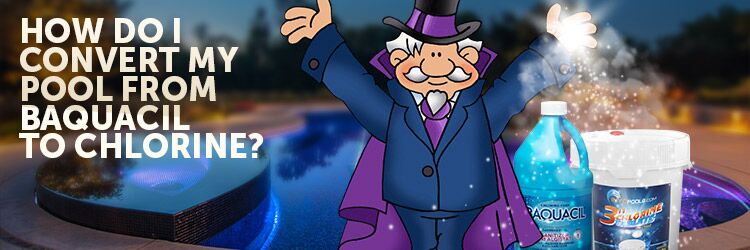
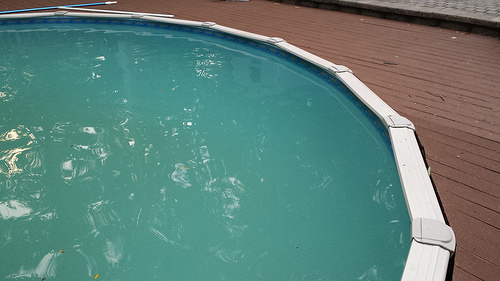
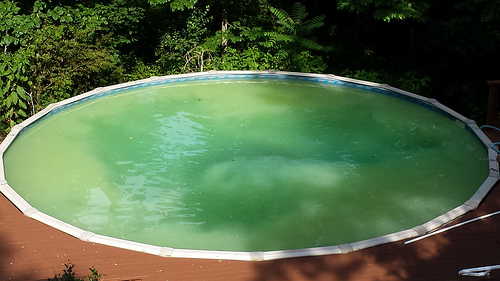
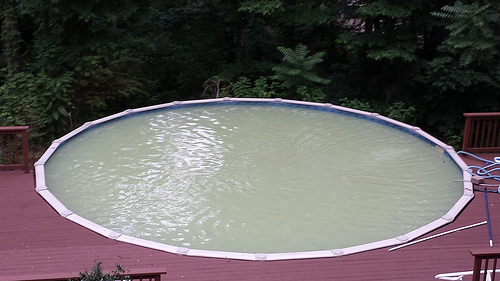
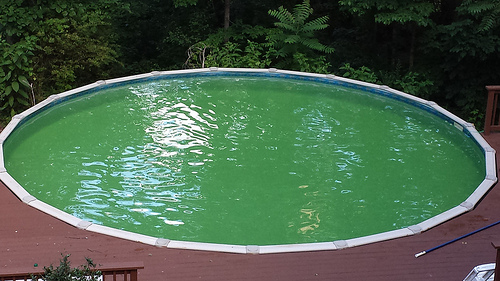
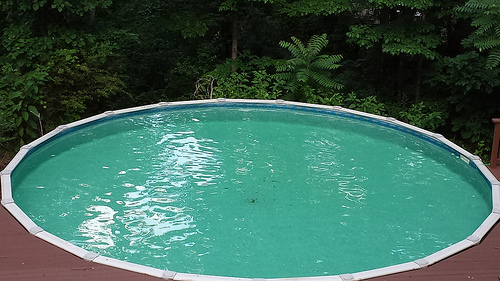


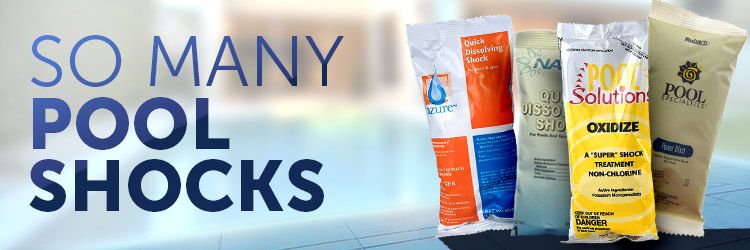








Great article. I have used Baquacil for the past three years after installation of a new liner. My pool is inground, holding about 24k of water.
The second year I started seeing white slime crap in the water, looked like partially dissolved toilet paper. It was in fact WHITE MOLD.
This year I’m trying to clear up the Baquacil remnants to switch back to chlorine, week two since removing the cover and $250 bucks of chemicals added so far and still have a pool of water that looks like milk. Such a disappointment, never using Baquacil again.
Exactly my situation, about $400 into chemicals to get the biguanide residual out of pool so I can switch to salt chlorinator. I’ve been working on this problem for about 3+ weeks now and about 40 pounds of non-chlorine shock dumped in it over the past 3 weeks. Water is crystal clear but still have a 20 reading on the biguanide residual. Pool store is telling me I have to get to single digits, zero being the preferred number. No swimming this Memorial Day, hopefully by July 4th at the rate this is going. Another note: I had the white slime mold 2nd year into a new liner install with Baquacil. When I opened pool this year it was full of the crap. Changed sand filter and it had moth ball clumps in it along with slime. I’ll never use Baquacil gain.
I have a 30,000 gal inground pool and last year decided to switch to chlorine. The previous year we were constantly dealing with white mold and literally spending a fortune on the baquacil treatments, even CDX. Last year we started out the year with a bacuacil level of around 20 and it never would drop below 10 all season. We changed the sand in the filter then over the whole season we used 250lb of non-chlorine shock, 2 floaters full of chlorine tablets the whole season, 20 gal of liquid chlorine, 300lb of chlorine super shock. The cyaunuric acid level was on the high side of where it should be. The whole season we kept the alkalinity & ph perfect for chlorine. After the initial rainbow colors when we started adding chlorine shock, it got better. All season when we added chlorine shock we would still get mostly green clouds in the pool, but by morning the water would be crystal clear. The water looked perfect all season.. best it had looked & smelled in years. But… it would never hold chlorine and the baquacil never dropped below 10. We were told is had something to do with the CDX “holding” the baquacil level. Before we open this year we are draining the pool, cleaning it, changing the sand and starting with new water. We spent a lot more on the chlorine side than it should have used, but still less than on baquacil. My warning, if you have used CDX with your baquacil… just drain the pool first before converting it to chlorine and save yourself a LOT of grief and expense
Thank you for the real-life experience. Much appreciated!
Was it safe to swim in while in transition?
I’m making the switch to chlorine. Thanks for the advise. I’m starting to get balls of white slimy stuff in the pool. Is that the bacqacil reacting to the chlorine?
That is white water mold that is what in fighting since I switched to baquacil not converting back to chlorine